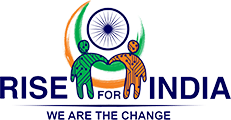“When we talk about Skill India mission, we do not merely talk about filling the pockets of people. We want to instil a sense of self-confidence among the poor”, very aptly said by our honourable PM Narendra Modi. Skill India is not an initiative to make people wealthy but to instill a sense of pride among them. Its mission is to remove unemployment by providing skills and training to them which can help them grow in their life. PM said, he targets to provide vocational training to 400 million people of the country by the end of 2020. If NSDC keeps on setting higher targets while fulfilling them, it is no far away from keeping up with the target.
There have been various efforts taken by the government to make Skill India initiative successful. In just one last year, the government has added 76 more training partners, 3000 centres and 8 sector skill councils (SSC). Out of $62.8 million committed amount, $28.67 million has been disbursed. Government has left no stone unturned to motivate people, what left is to provide career counselling to the people before enrolling them on a course.
Skill India, being one of the most crucial programme of modern India has a potential to change lives of millions of youth by providing them skills and providing them an opportunity to get out of poverty. But the question arises if it alone can fulfil all the targets that have been set by the government. “Skill Gap”, a term often used in correlation with Skill India campaign, refers to a mismatch of available supply of skills and market demand for them. In order to fulfil the gap, and in a hope to earn a little chunk of more money, a large proportion of people join the training which are not suitable to them. This can be alleviated only by proper career guidance and counselling imparted to these people.
A study done on data provided by NSDC, has mentioned that literacy rate in India is directly related to the success of candidates opting for vocational courses. This clearly means that the people who are more aware of the programs, take up aware decisions on vocational courses and have higher chances of being successful. Also, for the courses like food process, cold storage and refrigeration, there is very high rate of failure of students. This is simply due to lack of awareness and knowledge of such courses. In courses like beauty and wellness and power, there is very low percentage of students failing the courses. The rate can be made even lower by simply providing career counselling to students.
Career counselling is not only focused on helping students to realise their potential and capabilities but also on providing right information to the students regarding various sectors and career options. A high proportion of developed economies have close involvement of career counselling with vocational training in order to bolster the impact of training. National Career Services (NCS) in UK; Office of Career, Technical and Adult Education (OCTAE) in the US and European Association of Career Guidance (EACG) in Europe, all have collaborated vocational training with career counselling and have produced great impacts in few years of operation. Skill India also needs to collaborate with career counselling so as to not only increase the number of enrollments but also increase the percentage of successful students.

